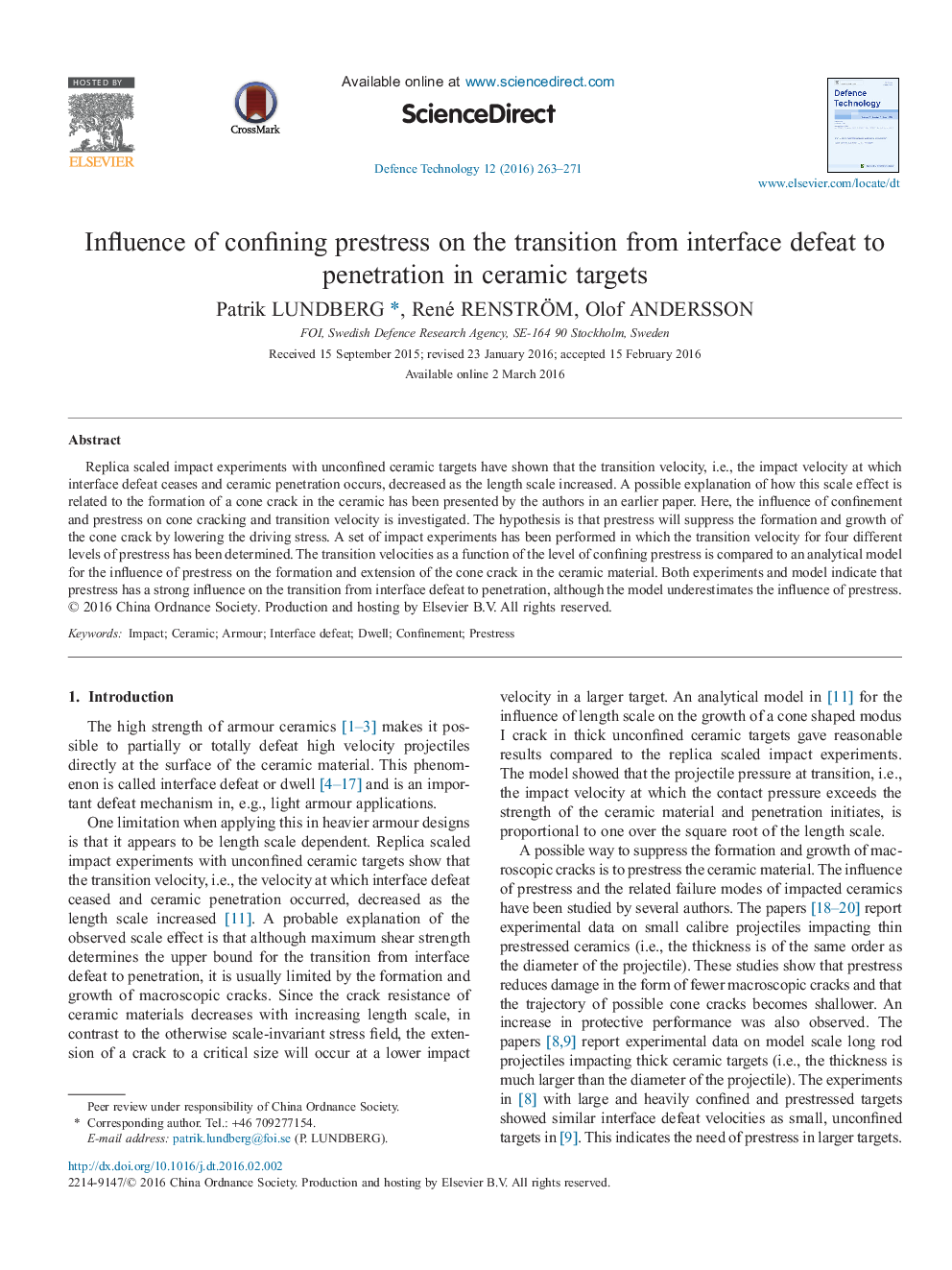| Article ID | Journal | Published Year | Pages | File Type |
|---|---|---|---|---|
| 763376 | Defence Technology | 2016 | 9 Pages |
Replica scaled impact experiments with unconfined ceramic targets have shown that the transition velocity, i.e., the impact velocity at which interface defeat ceases and ceramic penetration occurs, decreased as the length scale increased. A possible explanation of how this scale effect is related to the formation of a cone crack in the ceramic has been presented by the authors in an earlier paper. Here, the influence of confinement and prestress on cone cracking and transition velocity is investigated. The hypothesis is that prestress will suppress the formation and growth of the cone crack by lowering the driving stress. A set of impact experiments has been performed in which the transition velocity for four different levels of prestress has been determined. The transition velocities as a function of the level of confining prestress is compared to an analytical model for the influence of prestress on the formation and extension of the cone crack in the ceramic material. Both experiments and model indicate that prestress has a strong influence on the transition from interface defeat to penetration, although the model underestimates the influence of prestress.
